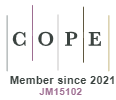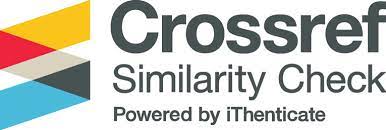Editorial Instructions
Submission Guidelines for the Journal of Finance and Financial Law
Action Required for Submitting the Article
Authors can submit their articles either:
- Via Email: Send the manuscript to joffl@uni.lodz.pl.
- Through the OJS System: Login or Register to submit your article online.
Ensure all required documents (full version, blind version, and author’s declaration) are included with your submission.
The editors of the Journal of Finance and Financial Law admit articles written in English.
Requirements for Submission
- Format:
Articles must be submitted in electronic form, using MS Word, and adhere to the journal’s editorial requirements (APA 7th Style Bibliographic list - Instructions). Please refer to the article template: JOFFL Template - Blind Review:
Authors are encouraged to submit two versions of their manuscript:- A full version containing all author details.
- A blind version that excludes any personal information to ensure anonymity during the review process.
- Declaration:
Each Author is required to individually attach an Author's Declaration (available at: Author’s Declaration) to the submitted manuscript. - Plagiarism Check:
The Journal of Finance and Financial Law uses the Crossref Similarity Check anti-plagiarism system. For more details, visit Crossref Similarity Check.
General Text Recommendations
Text Volume
- Abstract: Include an abstract in English, between 150–250 words, outlining the purpose, methodology, and research results.
- Keywords: Provide 5–8 relevant keywords.
- Main Text: The recommended length is between 22,000 and 40,000 characters (including spaces). This total should encompass the title, abstract, tables, graphs, and bibliography.
Text Layout
- Abstract: Clearly state the purpose of the article, methodology, and research results.
- Keywords: Include 5–8 relevant keywords.
- JEL Classification: Assign a classification code for the article, using the Journal of Economic Literature (JEL) system: JEL Codes.
- Introduction: Define the research issue, reference prior research, state the research problem, and justify the choice of topic.
- Main Content: Structure the content clearly with headings, emphasizing comparisons between your research findings and those of other authors.
- Discussion/Conclusion: Summarize findings, present conclusions, and provide recommendations for further research.
- Bibliography: Include a complete list of references formatted according to APA 7th Style.
Bibliographic Recommendations
- Cite sources primarily from the Web of Science and Scopus databases. Each article should reference at least 10 sources from these databases, except for articles in legal sciences.
- Verify that all cited articles in the bibliography include their DOI numbers. Use the following tool to check for DOIs: CrossRef Guest Query.
Editors’ Reservations
The editors reserve the right to:
- Make necessary language corrections.
- Reject articles that do not comply with the submission guidelines.
Note: Articles must not have been previously published or submitted for publication elsewhere.
Digital Accessibility Alternative Text
Instructions for Authors
To ensure accessibility and inclusion, authors are required to provide alternative text (alt text) for every visual element: figures, photos, charts, tables, diagrams, and infographic, submitted to APA journals.
Alt text enables screen readers to describe the essential content of a visual element to readers who are blind or have visual disorders. Without it, assistive software will only read the word “graphic”, providing no meaningful information.
How to Write Effective Alt Text
- Be concise and specific. Describe the content in one or two sentences (no more than 250 characters).
- Focus on meaning, not appearance. Explain what the image conveys, not its colors or layout (unless those are essential for understanding).
- Include key information. Summarize the main message, such as trends in a chart or actions in a photo. Example: “Chief financial officer presenting quarterly earnings results to investors.”
- Summarize charts and infographics. Include the title, a brief summary and trends shown or conclusion. Example: “Line chart showing steady growth in digital banking transactions between 2020 and 2025.”
- Avoid redundant wording. Do not start with” Image of”, or “Figure showing.”
- Skip decorative graphics. If a graphic has no informational purpose, mark it as decorative.
Adding Alt Text in Microsoft Word
- Right-click the image→ Format Picture Accessibility→ Alternative Text or go to Review→ Check Accessibility→ Alternative Text.
- Enter your description in the Description field.
- For decorative images, select Mark as decorative.
Optionally, provide a complete list of figures and corresponding alt text in an Excel file.
Placement and Compliance
- Include alt text for all figures and tables in the manuscript or during online submission.
- Captions and alt text should complement each other without duplication.
- Providing alt text is mandatory and follows APA accessibility standards and WCAG 2.1 guidelines. Manuscript missing alternative descriptions will be returned for revision.
References and Resources
- WCAG 2.1 (Polish): Wytyczne WCAG 2.1 (oficjalne tłumaczenie na język polski);
- WCAG 2.1 (English): Web Content Accessibility Guidelines (original English version)
- Website Accessibility Checklist: Lista kontrolna do badania dostępności cyfrowej stron internetowych









